Garden Galleries
Ready to get inspired? Start here!

Take a Look at These
In San Antonio, you have a wide range of plant choices that will not need much water. Here are but a few.
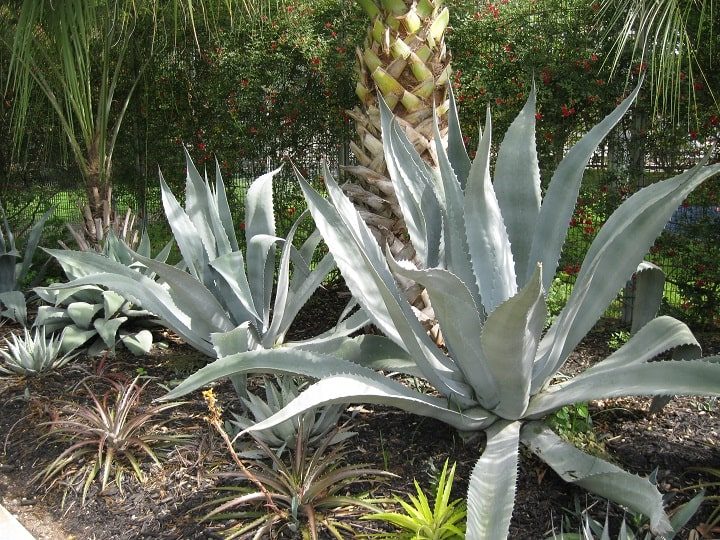
Agave
This agave, sometimes known as Century Plant, is quite at home in shady locations. These extremely drought-hardy plants add architectural interest to and landscape. Although many varieties have sharp thorns on the leaf tips, there are thornless options available. The flower spikes attract birds and butterflies.
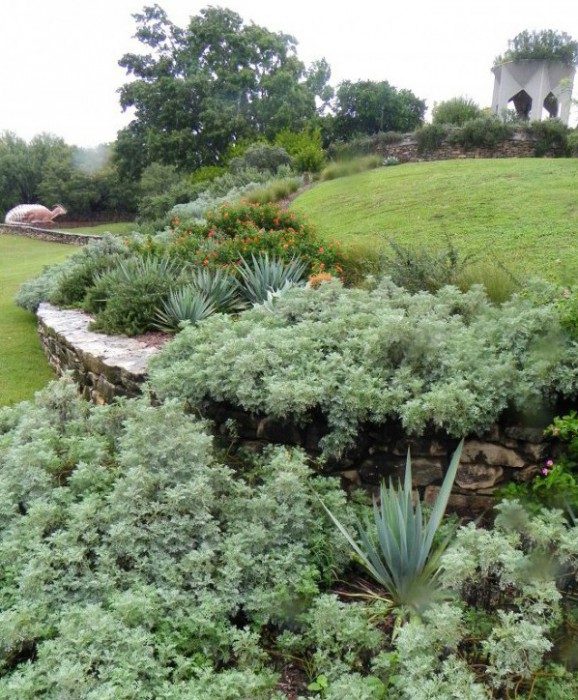
Artemisia
This hardy evergreen has a high tolerance for heat and adapts to most soils. It is deer-resistant with aromatic silver-gray foliage. Plant in sunny areas for best results.
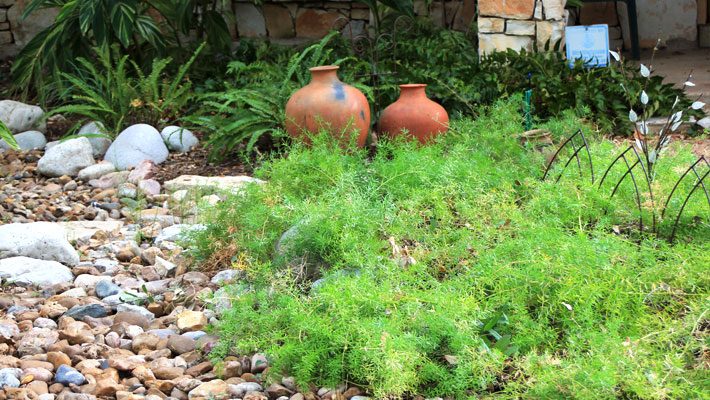
Asparagus Fern
Asparagus fern is a sprawling evergreen perennial that boasts tiny white blooms followed by small red berries. Although not a true fern, the bright-green, needle-like leaves resemble many common ferns. The asparagus fern is a member of the lily family and flourishes in shady locales.
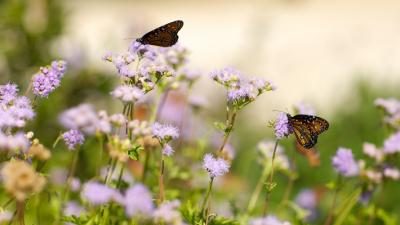
Blue Mistflower
Mistflowers could be called butterfly candy. This blue mistflower is covered in queen butterflies. Plant in sunny areas, sit back, and watch the butterfly show.
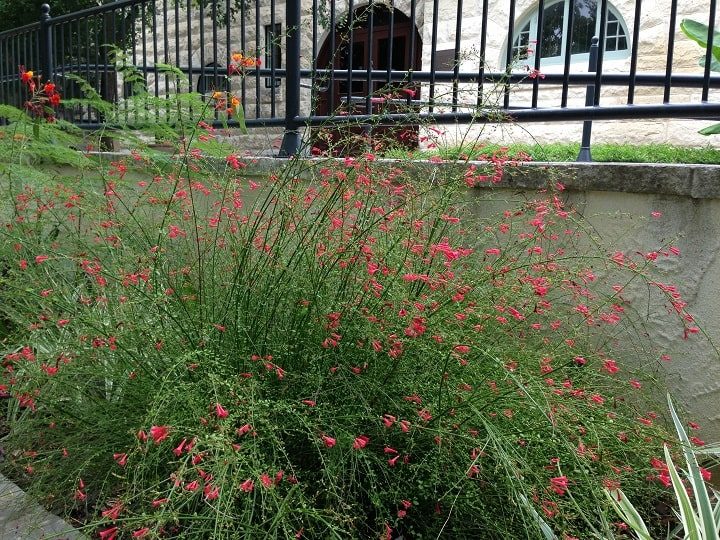
Firecracker Plant
The Firecracker Plant, also called Firecracker Fern or Coral Plant, is a hardy addition to shady areas within the xeric landscape. Its cascades of tubular red flowers are attractive to hummingbirds and butterflies and are present from spring through the first frost. The fine textured leaves make this plant very drought tolerant and ready to withstand any San Antonio summer.
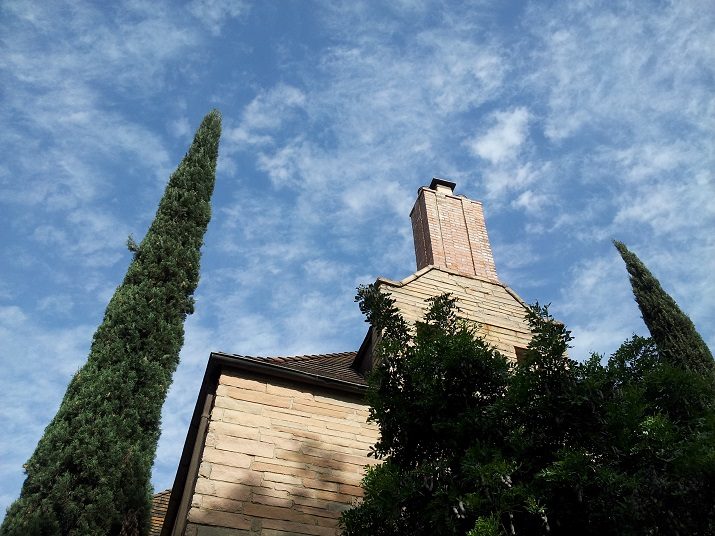
Italian Cypress
The Italian cypress grows like a spire in the landscape. It can be used as a specimen or along driveways; it can also be utilized to soften hard angles. The Italian cypress tolerates hot, dry summers but needs to avoid excessive soil moisture, especially in wet years. To prevent phytophthora root rot, avoid piling mulch and soil in direct contact with the trunk. Considering its growth habit, plant this tree in full sun with plenty of upward growth space.
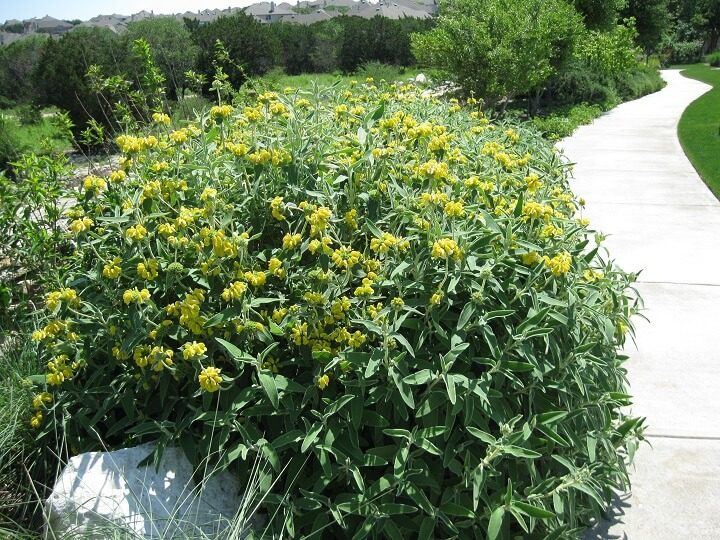
Jerusalem Sage
Jerusalem sage is a fairly large woody ornamental with fuzzy gray evergreen foliage and bright yellow flowers in late spring. This sage provides soft mounding texture to landscape designs and benefits from periodic grooming. While Jerusalem sage does well in the sun, it prefers a partial shade location.
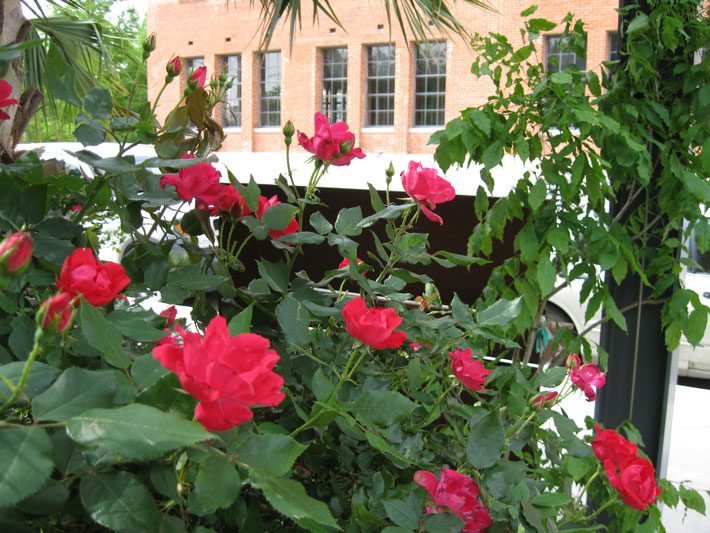
Knockout Rose
This rose is resistant to insects and disease and easy to grow for those who think they can’t grow roses. Knockout roses never lose their leaves so it's a good choice for those wanting a plant that stays green year-round and needs full sun. Blooms are present from spring through frost in bright cherry red or brilliant pink with a light tea fragrance. Not suitable for shallow soil locations.
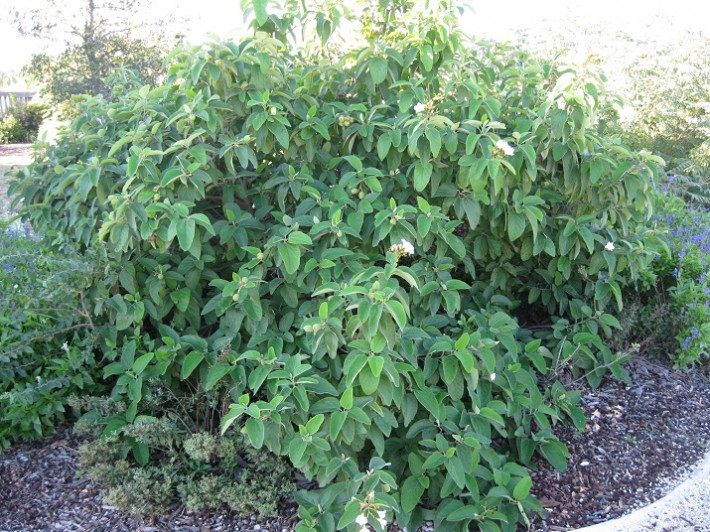
Mexican Olive
Get the Mexican Olive tree established in your landscape and it will survive with very little irrigation. It is nearly evergreen , but drops its leaves in extreme freezes. If unsure about freeze tolerance, make sure the Mexican Olive is planted in a south-facing area or given frost protection. The beautiful white trumpet flowers appear all summer long and sometimes stay year-round.
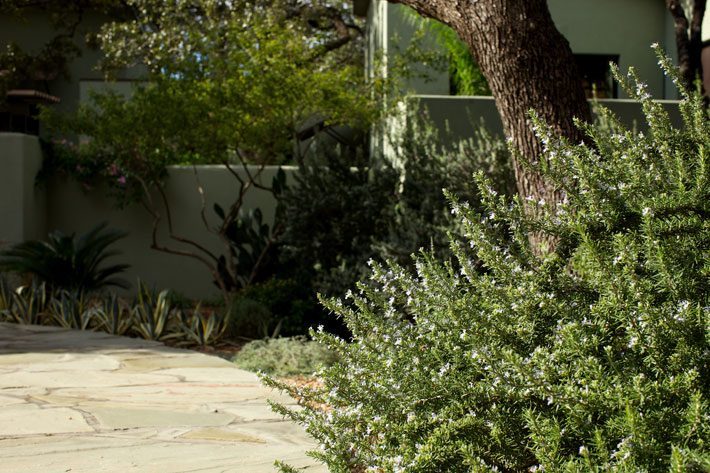
Rosemary
Rosemary (foreground, right) is a woody herb used throughout the landscape, appearing in upright and trailing forms. It is tolerant of drought, but can still be used to enhance many culinary delights in the kitchen. The branches of upright rosemary make great barbecue skewers! Rosemary prefers full sun and produces pale lavender-blue blooms from spring through fall.
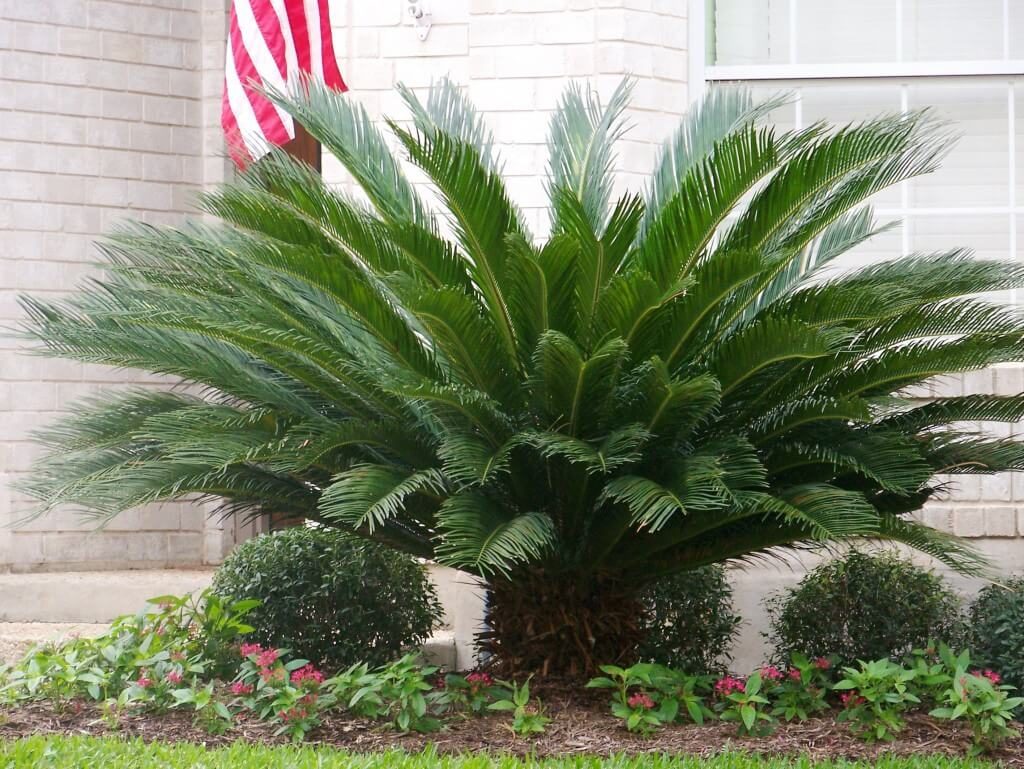
Sago Palm
The Sago Palm is not even a true palm - rather it belongs to a group of plants called cycads. Cycads are found in male and female forms, requiring each form in close proximity to produce viable seeds. Sagos have stiff green fronds and will grow up to 10 feet tall. Once established, a Sago requires very little water, withstanding heat and drought with ease.
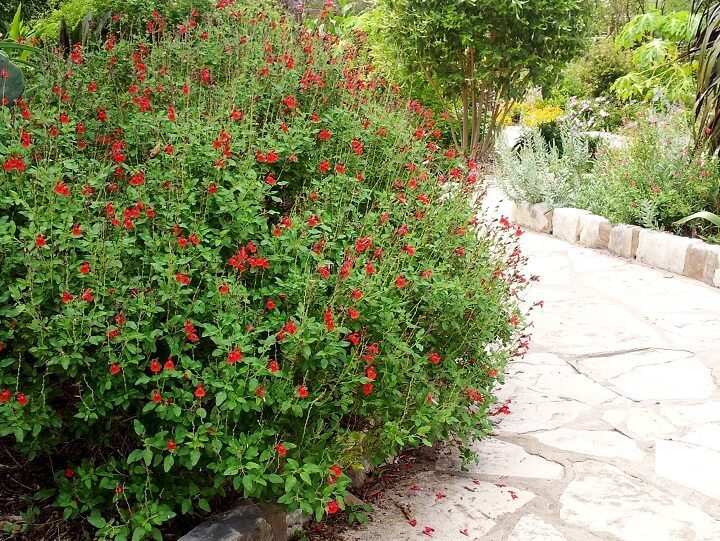
Salvia Varieties
There are many varieties of Salvia that would flourish in a shady landscape bed. The fragrant leaves and colorful flowers make an excellent complement to any plant materials selected for the location. Generally, these varieties average less than 30 inches at mature height, attracting hummingbirds and butterflies to your garden.
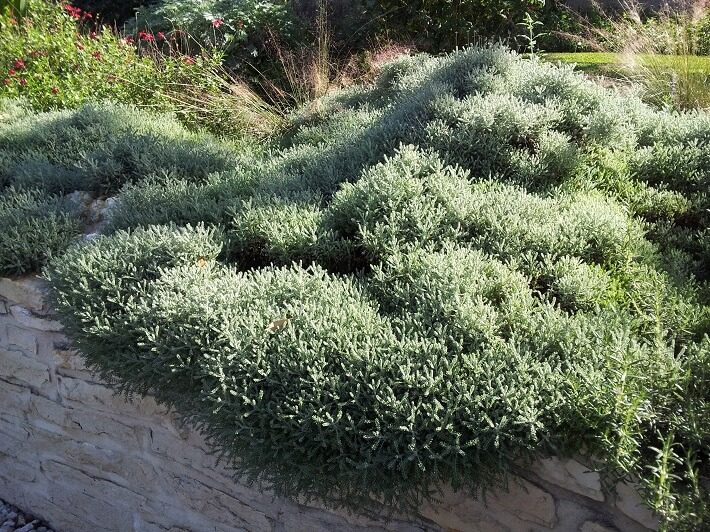
Santolina
Santolina is a fairly long-lived perennial herb that tolerates dry, sunny sites and does well in thin or sandy soils. There are green and gray versions (gray pictured here); they are often used in a manner similar to trailing rosemary.
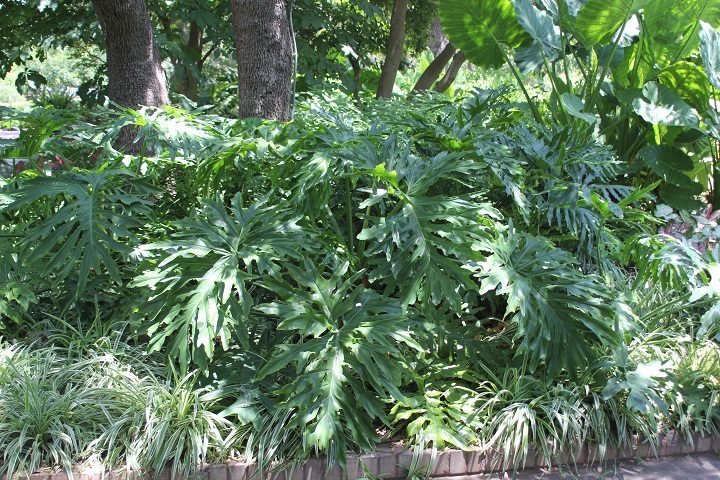
Split Leaf Philodendron
This beautiful evergreen prefers shade, so avoid planting where it could get afternoon sun. Philodendron is very sensitive to cold and should be covered during freezes. This plant needs little to no supplemental watering once established.



